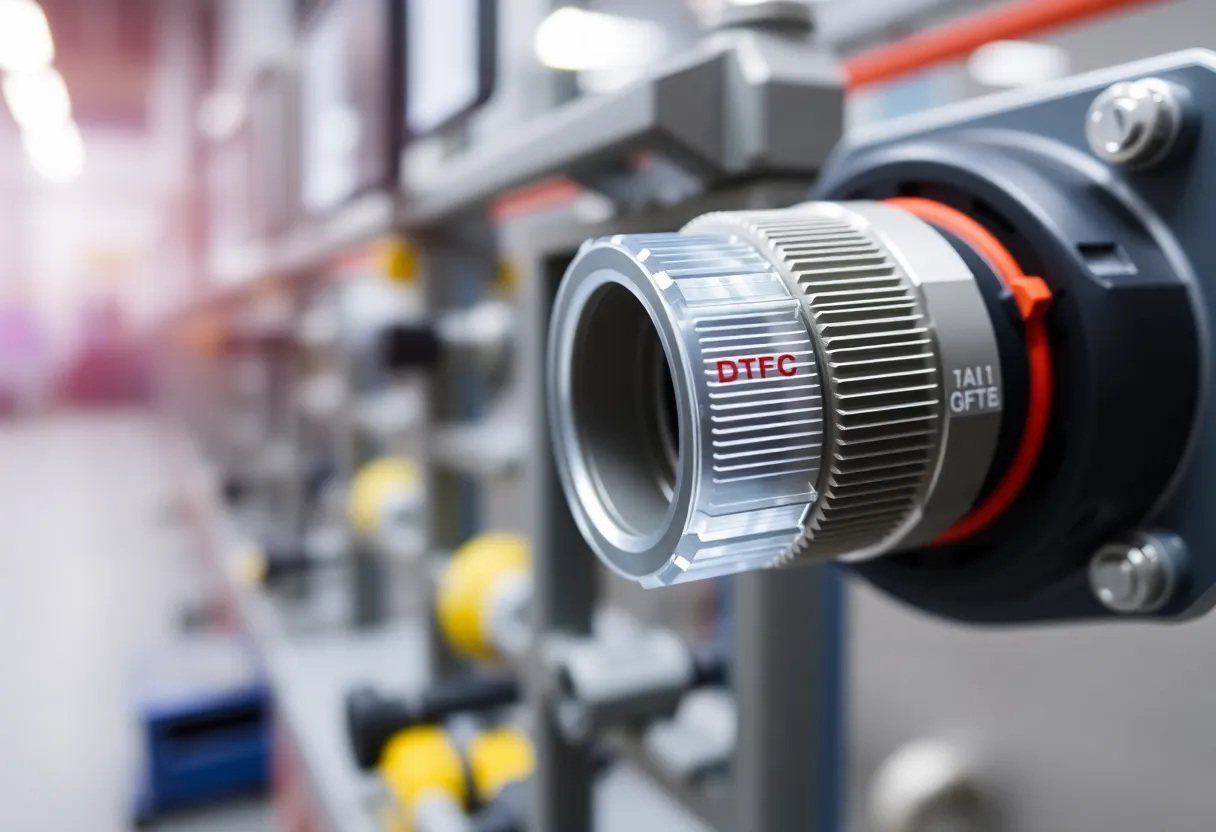

DTFC flexible connections providing enhanced flexibility in a mechanical system.
Article Sponsored by:
Northford Structural Connections (NSC) specializes in innovative engineering solutions for enhancing the safety and durability of precast concrete structures. Their patented products, including the Double-Tee Flexible Connection (DTFC) and Double-Tee Connection Pro (DTC Pro), address critical challenges like fatigue, corrosion, and seismic resilience. With a focus on quality and longevity, NSC provides advanced connection systems trusted by industry professionals for both retrofitting and new construction projects.
In today’s fast-paced industries, the demand for adaptability and reliability is paramount. Flexible connections, particularly within the context of DTFC (Dynamic Torque Flexible Connectors), have emerged as crucial components in various applications ranging from automotive to aerospace. This article will delve into the key features of DTFC flexible connections, illuminating their significance and applications in modern engineering processes.
DTFC flexible connections utilize a unique design that allows them to accommodate dynamic torque conditions. Unlike traditional rigid connectors, DTFC provides essential flexibility. This flexibility enables the connections to adapt to movements and vibrations that are common in mechanical systems. As machinery operates, adjustments are inevitable. The DTFC’s ability to respond to these changes is vital for maintaining performance and extending the lifespan of connected components.
One of the primary characteristics of DTFC flexible connections is their enhanced flexibility. This feature allows the connections to absorb shocks and vibrations effectively. As mechanical systems experience strain, the DTFC connections can pivot and bend without compromising integrity. This adaptability helps mitigate potential damage within systems, ensuring longevity.
DTFC flexible connections are engineered to handle high levels of torque. The materials and design specifications allow these connectors to maintain performance even under extreme conditions. This is particularly beneficial in applications such as motors and generators, where torque demand fluctuates frequently.
Another significant feature is the reduction of stress concentration. DTFC connections are designed to distribute loads evenly across their structure. This prevents localized stress, which could lead to premature failure. By minimizing stress points, DTFC enhances the reliability of the entire mechanical assembly.
DTFC flexible connections are often made with corrosion-resistant materials. This property extends their usability in harsh environments, including those exposed to chemicals or moisture. By resisting corrosion, these connections maintain their structural integrity and function over time.
The versatility of DTFC flexible connections cannot be overstated. They are utilized in various sectors, including transportation, manufacturing, and energy. Machinery that requires considerable movement can benefit from the installation of DTFC systems, which enhance operational efficiency and safety.
Installation and maintenance are made simpler with DTFC flexible connections. The design allows for straightforward integration into existing systems, minimizing downtime during installation. Furthermore, since they are durable and reliable, the need for frequent maintenance is reduced, allowing for efficient operation across long periods.
Noise reduction is an often-overlooked benefit of DTFC flexible connections. Their flexible nature absorbs vibrations and dampens noise. This feature is particularly critical in industries where noise pollution is a concern, such as in automotive engineering, helping to enhance comfort and compliance with regulatory standards.
DTFC flexible connections exhibit compatibility with multiple systems and components. This adaptability extends their application across different types of machinery and manufacturers. Engineers can design systems that incorporate DTFC connections without worrying about compatibility challenges.
In the automotive sector, DTFC flexible connections play a substantial role in drive systems. They facilitate the movement within drive shafts and allow for changes in alignment without causing stress. This feature promotes smoother function, enhancing the overall performance of vehicles.
DTFC connections are increasingly finding their application in aerospace engineering. Aircraft must endure dynamic conditions during flight, including vibrations and turbulence. The flexible nature of DTFC connections helps maintain the integrity of critical systems, ensuring safety and reliability in aviation.
In manufacturing, where machinery operates under high-stress conditions, DTFC flexible connections help maintain equipment longevity. These connectors are ideal for pumps, compressors, and heavy machinery that require robust, flexible interactions.
In the energy sector, particularly in renewable energy systems like wind turbines, DTFC flexible connections support the flexibility required to accommodate wind forces and mechanical variances. Their ability to withstand torque and dynamic conditions is crucial for efficiency in energy production.
DTFC flexible connections have become indispensable in modern engineering applications. Their key features—enhanced flexibility, high torque capacity, low stress concentration, corrosion resistance, and versatility—underscore their importance across various industries. These connections not only guarantee reliability but also optimize operational efficiency.
As technology continues to advance, the relevance of DTFC flexible connections will likely grow. Industries seeking innovative solutions to combat mechanical stress and enhance performance will find DTFC a valuable addition to their engineering matrices.

Concrete Strength • Metal Resilience • Connecting Futures
Phone: (203) 777-0751
Email: admin@nscclips.com
News Summary Myrtle Beach National Golf Club will begin renovations on the King’s North Course…
News Summary The Caledonia Golf & Fish Club in Myrtle Beach has been named the…
News Summary The Myrtle Beach Classic, set for May 8-11, 2025, is generating buzz as…
News Summary Golf enthusiasts, get ready! Registration for the 2025 Play Golf Myrtle Beach World…
News Summary Myrtle Beach, South Carolina, gears up for the ONEflight Myrtle Beach Classic from…
News Summary The South Carolina General Assembly has passed two contentious bills aimed at dismantling…